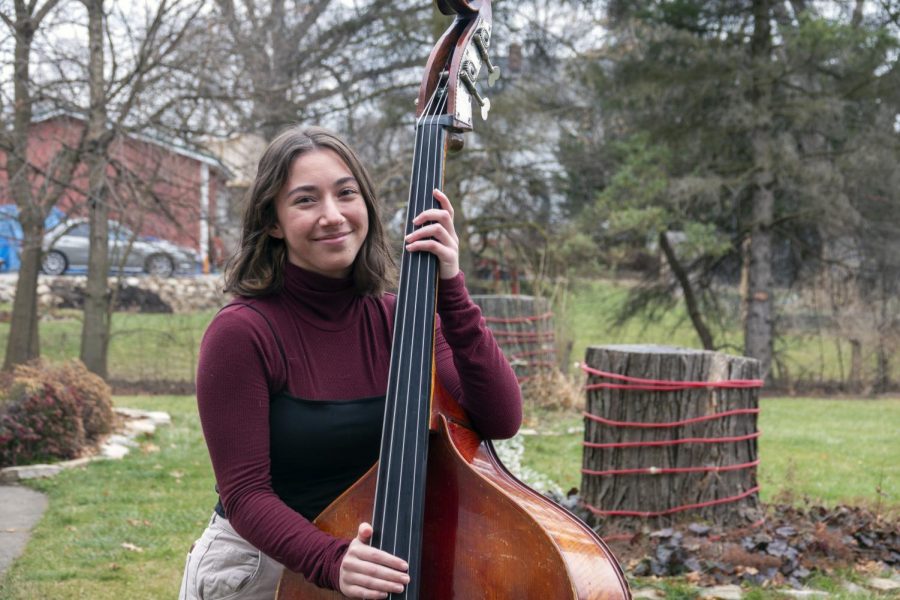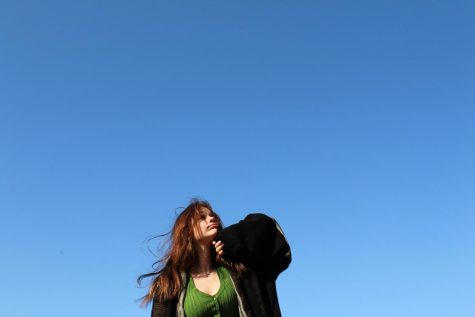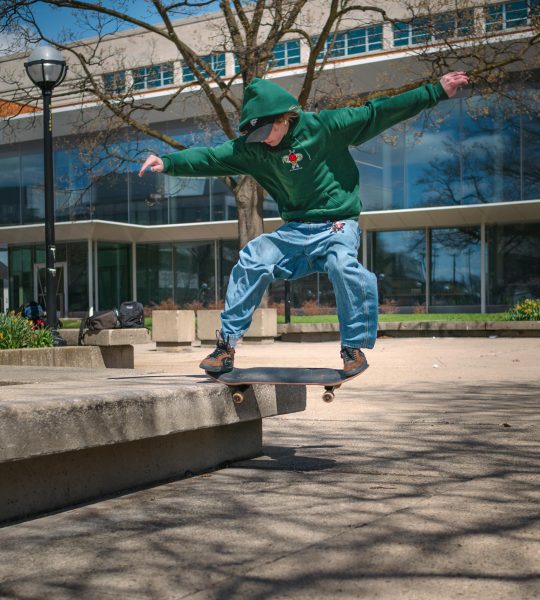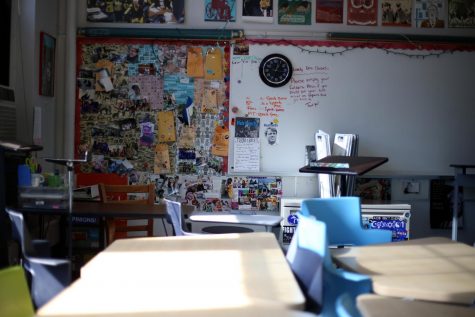Women in Jazz – Stevie Dumitrascu
Stevie Dumitrascu spent her childhood looking up to her older brother and his musical passions. She remembers going to his choir concerts when she was young, watching him sing his heart out on a big auditorium stage. Her brother’s influence made Dumitrascu realize she loved playing music.
“I realized it’s a great way to get your feelings out and just really show off something,” Dumitrascu said. “It’s like being able to make other people feel your emotions through what you’re doing.”
Growing up in her brother’s musical atmosphere motivated Dumitrascu to join choir in middle school, which she still participates in today at Huron High School. She describes herself as a “choir kid” and attributes her music literacy and understanding of music theory to her early choir teachers. Without her experience in choir, Dumitrascu doubts she ever would have joined jazz.
Dumitrascu auditioned for the jazz program at CHS the summer before her freshman year on electric bass, which she had been playing for three years. She got into Jazz 2, but with a condition: she had to switch to upright bass, a more traditional jazz instrument. Before the first day of her freshman year, she had never even touched an upright bass, let alone played one. Although upright and electric basses share a name, they are two entirely different instruments.
[Learning upright bass] made me really proud of myself,” Dumitrascu said. “I think everyone goes into high school kind of really insecure — like it’s this whole new environment — and I think having jazz there, having Jack help me prove to myself that I can do all these new things and I can be good at that helped me gain confidence in a lot of other areas of my life.”
Playing jazz helped Dumitrascu break out of her shell and become more confident in herself. She felt accepted and cheered on by her teacher, Jack, and the older kids in Jazz 2. The atmosphere of the jazz program helped Dumitrascu to believe in herself, in jazz and in life.
“At the start of freshman year, I think I was pretty closed off,” Dumitrascu said. It was really scary to me. And then having older people in my class that would cheer me on, [that] made me more confident, like I can talk to people and they won’t immediately put me down. They’ll see that I have some worth to me.”
However, she quickly noticed how few women there were in the jazz program — especially other female bass players.
“In Jazz Lab and Jazz 4, there was one girl bassist and that was it,” Dumitrascu said. “We didn’t really have a girl to look up to.”
The lack of female jazz role models, both in history and in her real life surroundings, is a big issue for Dumitrascu. In jazz class, she hears her teacher and the other jazz students discuss the jazz greats: Charlie Parker, Louis Armstrong, Miles Davis and Duke Ellington. She rarely hears women mentioned as one of these jazz icons.
However, Dumitrascu has found female jazz musicians to look up to. She especially loves Esperanza Spalding, a bassist and vocalist who she found through a jazz assignment last year. Spalding inspired Dumitrascu to learn one of her songs and consider singing while she plays.
“[Spalding] really stuck out to me,” Dumitrascu said. “I was just always listening to her.”
Dumitrascu hopes to one day be a role model for female musicians just starting out in jazz. She wants to be the person she did not have when she started playing bass in Jazz 2 — to be inspiring and ready to help for anyone who needs it. For now, she says keep working; you’ve got this.
“Don’t give up,” Dumitrascu said. “I heard a lot of times when I was first starting jazz about how hard it is and how tough it can be, so I’d say, if you’re having trouble with something, you can always do it.”










